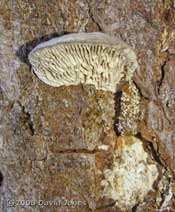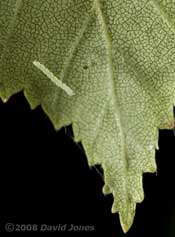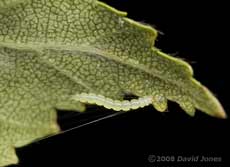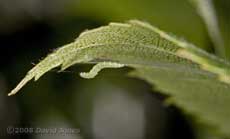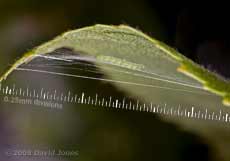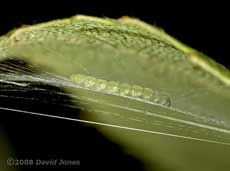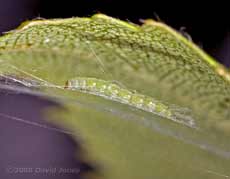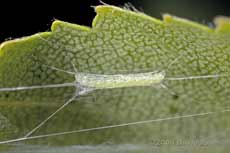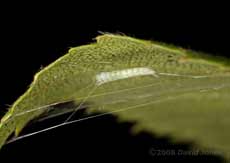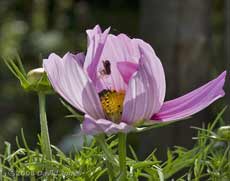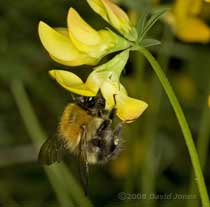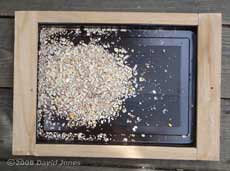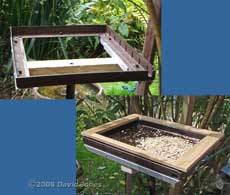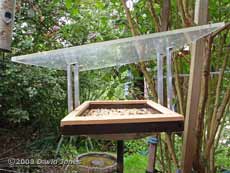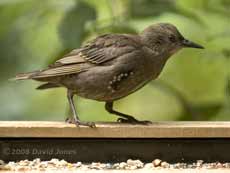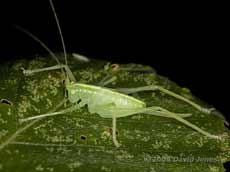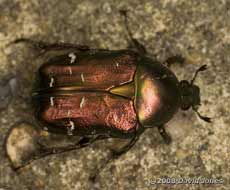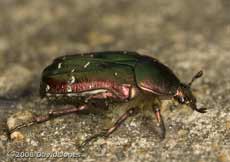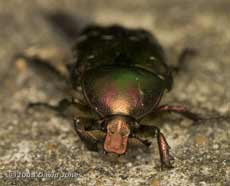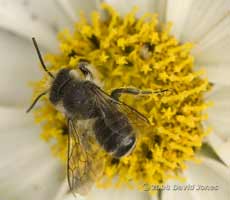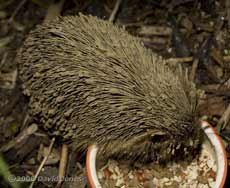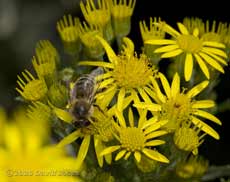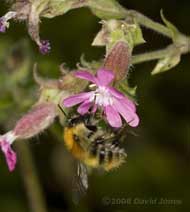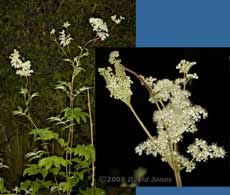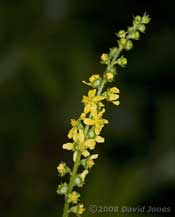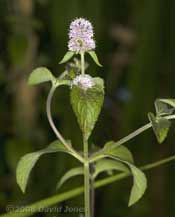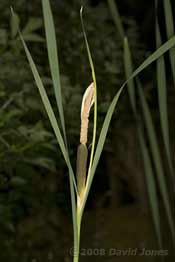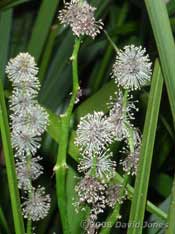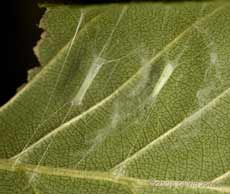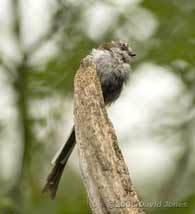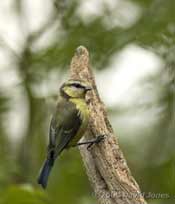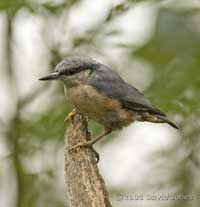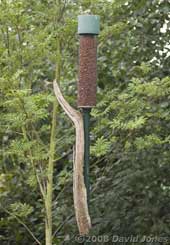Go to the last entry on this page .....Go to previous entry15 July - After a period of disappointing weather, the last three days have been much better - just in time for the Farnborough Air Show. Although we can see nothing of the flying displays from here 9only hear the high performance military jets), our garden is more or less directly below the flight corridor used by the helicopters carrying the 'important' company people between the airfield and London. I hope to go to the show on the weekend. The force hasn't been with me at the moment. In addition to the usual weariness, when I tackled the Ivy my arms, legs and feet were hit by some sort of allergic reaction, something that has never happened before - it has been very annoying. The itching kept waking me up at night so I wasn't in the mood for doing much of anything for a few days. It seems to be fading away now, but I'll be staying away from the Ivy until the summer is well and truly over and it's cool enough to wear a long sleeved shirt! Anyway, I have still been trying to follow events in the garden. I'm afraid that the female Blackbird has decided to nest elsewhere again. I've seen her gathering bits at the bottom of the garden and heading into the conifers beyond the back fence. Her two youngsters occasionally make an appearance in the garden and yesterday I watched one being fed by dad under the Hawthorn. After the Nuthatch made all those visits on the 10th it has made only occasional visits since. The Swifts are still overhead and going into the neighbour's roof but there is no sign of a House Martin overhead, let alone visiting the nests. A few days ago I had an e-mail from Tim Norriss (the Hampshire County Recorder for Moths). He tells me that the caterpillars within the cocoons (4 July) may well hatch in a couple of weeks or so.
When I included the photographs of the cocoons I should have mentioned that one of them was actually suspended from the fruiting body of a bracket fungus!
At the beginning of July 2006, as I trimmed the Elder I discovered the hammock produced by an Apple Leaf Miner micro-moth (Lyonetia clerkella) - identified for my at the time by Tim Norris. On another Elder leaf I found a second caterpillar that was still making its hammock (7 July 2006) and was able to take a series of pictures of the final stages of the process.
Two days ago I had the opportunity to watch another of these caterpillars preparing to pupate, this time on the underside of a birch leaf. This time the leaf was firmly attached to the tree so photography was a bit more of a challenge. At this stage (2pm 13 July) the caterpillar seemed to be going back and forth laying a large number of parallel strands of silk.
By the time I had a tripod set up and had made an effort to clamp the branch (to minimise the movement caused by a breeze) the caterpillar had started to construct a multi-strand length of silk about the mass of single fibres (2.23pm).
As it did this it maintained a grip on the lower layer of silk as it added further strands to the bundle (3.09pm).
Over the next 3/4 hour this bundle of fibres must have contracted as the the tip of the leaf was pulled down slightly, leaving the many individual threads somewhat slack. The caterpillar now set about organising these (3.53pm).
It was soon obvious that it had started to create the hammock itself (4.02pm).
In this picture, taken at 4.42pm the hammock is clearly visible. By now the breeze had picked up and it was impossible to keep the leaf in place without damaging either it or the branch it was attached to
By 5.38pm, in addition to the hammock itself the caterpillar had organised some of the single fibres into an second thick bundle with which to support the hammock.
Silk was being put to a more sinister use in another part of the garden today.
A look inside revealed that some of the petals were held together with the silk of a spider, leaving enough of an opening to tempt bees in. Although the spider was already feeding on one victim it was obviously ready to grab another bee for later - this on managed to escape!
I'm still not seeing any honeybees here. There are bumblebees visiting, mainly a mixture of Common Garden Bumblebees (although I'm not sure of the nest in the composter is still active) and Carder bees. The carder bees seem particularly attracted to the Kidney Vetch (Anthyllis vulneraria) which is thriving this year after I though it had failed!
It hasn't been a good summer so far for butterflies. Since I photographed the Red Admiral on the 4th I've seen just one more in the garden, just a couple of Large Whites and a single Holly Blue (while pruning the Ivy!). At 11pm I've just been out in the garden. As I went out I disturbed a large, quite pale moth which I think was probably one of the Emeralds - on the basis of its size it could have been a Large Emerald, but it fluttered out of the garden before I could get a good look. On the Buddleia there was a single Gothic, a couple of Yellow Underwings (I'll need to check in the morning to decide which ones), and seven Old Lady moths! There were two moths on the outside of a window that I will check on in the morning.
16 July - Another bright day, although high cloud hid most of the blue sky by the afternoon. I had enough energy today to get out my workmate and a few tools to make a new bird table.
Last week, after more than twenty years of sterling service our old microwave finally gave up. Having heaved it out of the kitchen I had a thought, and a few minutes later I had taken the door off and dismantled it! As I suspected, the metal grill in the door was part of a pressed metal unit which was almost exactly the same size as our existing (and worst for wear) table.
I toyed with several ways of using the unit but in the end came up with a design which should make cleaning the table a lot easier than previously. The first thing was to cut some fairly thin unseasoned wood to fit around the rim, and attach the pieces using the screw holes already in the unit. The wood can be replaced easily at any time. After taking this picture I drilled some holes most of the way through the wood at one end of the table to allow for the feeding behaviour of the Nuthatch.
Rather than mount the table directly onto a pole, I used the plastic surround from the door and mounted that via some aluminium pieces and a thick block of treated timber. The new table top just sits in this frame and can be lifted out for cleaning.
The old table had a Perspex cover which protected the food from the rain but still let light through for photography. I will be adding this in the next day or so once I've made some brackets to attach it to the aluminium frame.
17 July - A cloudy, and sometimes damp morning, although the promised heavy showers had not arrived by 1pm.
That, like the aluminium and wood used was recycled material, with only the pop rivets being new. This table should now last us for a long time.
18 July - The glum weather continues. It has, at least, stayed more or less dry, with just a touch of dampness at intervals through the day. A mixture of low light and low energy has meant that the cameras haven't had too much use today.
I still haven't managed to get a photograph of the young Robin that is in the process of gaining its red breast, but at least I can record that some of the Starling youngsters are starting to gain the speckled breast plumage of their parents. This one also has also gained orange-tipped covert feathers.
The grey skies mean that there aren't many insects to be seen in the garden during the day, but last night I came a regular July sighting in the form of a female Oak Bush Cricket (Meconema thalassinum) on a Birch leaf.
Back at the beginning of the month I mentioned seeing a Rhadinocerea micans adult in the garden in addition to larvae on the Iris leaves. Today I saw another adult but the larvae seem to have all disappeared now - have they pupated now?
21 July - This morning its all blue skies, and it looks as though summer weather is returning, with very warm temperatures forecast by the end of the week. The last couple of days have been dry and the day before yesterday there were some decent periods of sunshine, albeit accompanied by a stiff, cool breeze. That brightness must have brought out the insects, if not in our garden then in the air around the trees that border the Brickfields Country Park as in addition to the Swifts I saw a House Martin flying low numerous times during the day. Good enough reason to keep on monitoring the nests for a while yet! There is still a shortage of insects in the garden as far as I'm concerned. I did a bit of pruning yesterday and checked every bit that I cut off, but didn't find anything that warranted getting my camera.
This one was about 18mm long. Its metallic coppery coloured elytra has white markings that give the appearance that the surface has been scratched by something.
When viewed from a different angle its colouring changes dramatically to a deep green.
Viewed from the front, its head is an almost comical rectangular shape. It was very reluctant to fly and when I put it onto a flower (they eat pollen and drink nectar) it was 'happy' to stay there for quite some time.
So far this year I have not been able to photograph any of the bees during their leaf cutting, but I did capture this picture of a very pale individual at one of the Cosmos flowers. It's interesting to note that while the Cosmos flowers are popular with the solitary bees, I have yet to see a bumblebee visit them.
Hedgehogs are regular night-time visitors and last night there were at least three in the garden. Covered with caked mud, I don't know where this one had been prior to its visit, but it turned up before dark and tucked into the chopped peanuts immediately. Despite its grotty appearance, it seemed quite healthy, and headed off down the garden afterwards.
22 July - A warm summer's day, as promised, with a high of just under 24C this afternoon. It is still 19C at 10.15pm. The best photograph of the days was the one I didn't take when a perfect example of a Comma butterfly landed briefly on a plant in the pond, only to leave before I got back with my camera. Beside that, I only saw a couple of Large Whites during the day, and the Buddleia is fast loosing its power to attract butterflies.
There are enough of he Buddleia's flowers left to provide nectar for small numbers of Garden Bumblebees, and today I saw Honey Bees for the first time this year. I couldn't photograph them on the Buddleia, but I was able to get close when their visited the Ragworts that are now in flower here. They also visited the Kidney Vetch flowers.
The Carder Bees continue to favour the Kidney Vetch, but they are also partial to the nectar provided by the small number of flowers still being produced by the now very scraggly Red Campions.
At the far end of the big pond a Meadowsweet plant that I planted last year and forgot about is thriving in the damp ground this summer. It is over 4ft tall at the moment.
Next to the Ragwort that appears in the photograph of the Honey Bee is another plant put in at the same time as the Meadowsweet. This is Common Agrimony. Most of the plant is hidden, hence the picture of the flower spike only. I shall have to watch out for this next year, by which time it will, hopefully, have really taken hold.
A couple of pond plants to note - First, the Water Mint has just started flowering.
With their flowers long finished, the Flag Iris foliage is in danger of overwhelming the ponds, and during the Autumn I intend to clear a great deal of it, especially in the small pond.
Standing out against the broad green foliage of the Irises are the more slender, blueish-green leaves of the Greater Reedmace. There are four of these impressive plants in the big pond at the moment, although only one, the smallest, has produced its flowering structure. The male flowers (spadex) at the top of the flower stalk have already shed their pollen, and the female spadex is still developing its brown colouring. Like the Irises, the Reedmace has to be controlled to prevent it form taking over the pond.
Rather more hidden, the Branched Bur-Reed has also been flowering for some time. As far as I can tell, the male flowers, at the tops of the flower stalks, have long shed their wind-borne pollen, and the female flower heads resemble miniature aerial firework bursts, especially when lit by a torch after dark.
Going back to the animal occupants of the garden for the last picture of the day, while I'm quite used to finding the hammocks of the Apple Leaf Miner caterpillar, this is the first time that I've seen two of them on the same leaf, let alone 'in formation' like this. The occupant of the right hand hammock has already pupated, while the other appears to be still at the caterpillar (or pre-pupal) stage.
23 July - After yesterday's sunshine it was disappointing this morning to open the curtains to grey skies. Although it brightened up later the sky remained hazy for much of the day, and it has felt quite humid. My only photo-opportunity of the day came when I first ventured down the garden in my dressing gown and with a mug of tea at just after 7am. Although the garden was quiet, with no bird song, the tall peanut feeder was being visited by Long-tailed Tits.
I retreated to the house, grabbed my camera and crept down to the cover of the caravan shelter. The Long-tailed Tits frustrated me by staying on the other side of the feeder, and I only managed this one reasonably sharp picture.
The decision to get my camera was further rewarded when within the space of about a minute I also grabbed this picture of a juvenile Blue Tit,
and the Nuthatch again! If I had been a bit more alert there would also be an image of a Great Tit, on the same perch for just a moment.
For those of you not familiar with my tall peanut feeder, it stands next to the young Rowan, The feeder's base stands about 2.4m above the ground and the feeder itself is about 50x10cm. While it may appear to contain a large quantity of peanuts, looks are a bit deceptive - down the centre of the feeder there is a length of plastic pipe, nearly 7cm in diameter. The peanuts only fill the space between that pipe and the external wire mesh. The perch is a piece of drift wood brought back after one of our Cornish holidays.
At the beginning of the entry I mentioned that the absence of bird song this morning. It has remained that way for much of the day. After having them back and forth many times every day for several weeks, I haven't seen or heard a Blackbird in the garden over the last few days. I'm afraid that there is now going to be another hiatus in the diary - to be resumed soon. In the meantime the House Martin webcam will continue to run. I haven't given up on them yet as they turned up this late back in 2004! Click on images to see larger versions |
|
